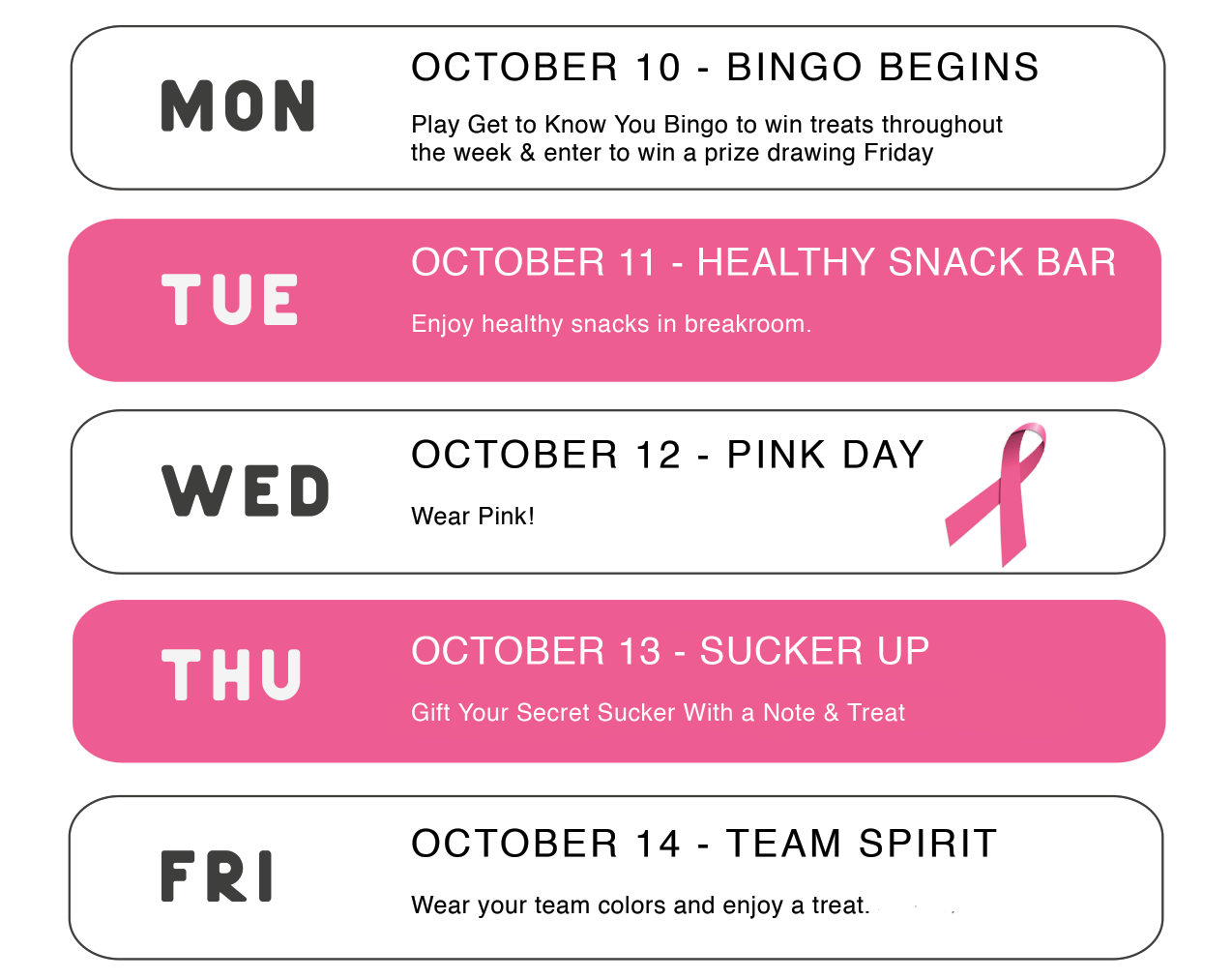Employee Dashboard
TEAM CALENDAR

Employee Handbook
Employee Directory
Alex Whitmire
Andrea McClung
Ashley Renne
Ashley Rodriguez
Becky Crib
Bo Reeves
Brandy Turner
Brooke Woods
Carol Dew
Carol Walker
Carole Morgan
Carson Edwards
Christine Hunter
Christine McCrery
Christopher Accetta
Cyndi Whitford
Danyelle Woods
Elizabeth Muckelvaney
English Washington
Erica Heyward
Heather Foster
Hunter Smith
Inge Crawford
Janice Quinones
Jeanne Collins
Jenna Brown
Jennifer Bolen
Jennifer Heinemann
Jessica Farst
Joni Molina
Jordan Thackston
Katie Luis
Kayla Varnes
Kelsie Kirby
Khristy Muldrew
Kristen Murray
Lauren Schultz
Leta Howard
Lisa Shuey
Lisa Watkins
Malory Sirois
Mandy Crosby
Martha Cohen
McKailyn Murray
Melissa Ramsey
Michelle Hollis
MiKayla Hood
Miles Reeves
MJ Jones
Morgen Wahl
Nastashia Brown
Niki Gilchrist
Rebekah Billoit
Ron Givens
Shannice Moore
Shelby Bassford
Stephanie Gibson
Suzanne Lafond
Taylor Epilon
Terry Jones
Tina Toporek
Vanessa Triplett
Vicki Kirby
Whitney Holmes
Employee Spotlight!
Customer Service
Team Communication
Problem Solving Steps
1. Talk to the Right People
2. Get Clear on the Problem.
3. Listen. No seriously. Identify Agreement and Disagreement.
4. Create a Plan.
1. Talk to the Right People
This does not mean talk to your best friend over in the other unit and then going straight to a provider. This means: 1. The person; 2. The supervisor. Do you feel like there isn’t an environment for your sharing? Are there regular check ins with all levels?
2. Drill Down on the Problem
Go beyond the first impulse. Ask 3 questions.
Focus on the Behavior/Event, Not the Personality.
3 Listen. No seriously…Identify Agreement and Disagreement.
Non-verbal communication. Be aware of what you communicate with your body; your posture and expressions can convey your attitudes toward a speaker even before you say one word. Use body language to show the speaker that you are engaged in the conversation and open to hearing.
• Recognize your own prejudices. Be aware of your own feelings toward the speaker. If you are unsure about what the speaker means, ask for clarification instead of making assumptions.
• Listen to understand the underlying feelings. Use your heart as well as your mind to understand the speaker. Notice how something is said as well as the actual words used.
• Don’t interrupt: Be sure you think carefully before you speak. As a listener, your job is to help the speaker express himself.
• Don’t judge the person: A speaker who feels you are making judgments will feel defensive. Avoid making judgments and instead try to empathize and understand the speaker’s perspective.
• Do not give advice: Keep in mind that the best resolutions are those that people arrive at themselves, not what someone else tells them to do. If you feel it is appropriate, and only after you have encouraged the person to talk, offer some ideas and discuss them.
• Empathize: Put yourself in the other person’s shoes and try to understand.
• Validate: Acknowledge that the person’s feelings are valid. This is a very powerful tool because you are recognizing the person’s right to feel that way, regardless of whether you would feel the same way.
• Restate: this allows you to make sure you understand the feelings and shows you are listening. Point out the good things the person has done or tried to do.
• Clarify: Ask questions to get more information about the problem.
• Summarize: Paraphrase the main points you have heard so that you can make sure you understand all the issues.
4. Create a Plan.
Talking about a solution is an idea. Writing it down and creating actions steps is a plan.
That plan should include tasks, follow ups, and timelines.
Customer Communication
